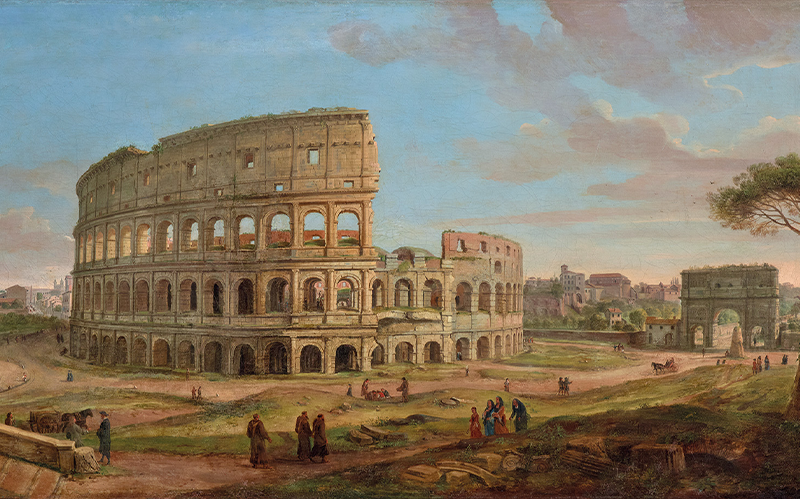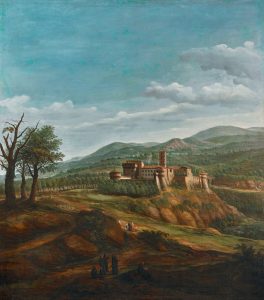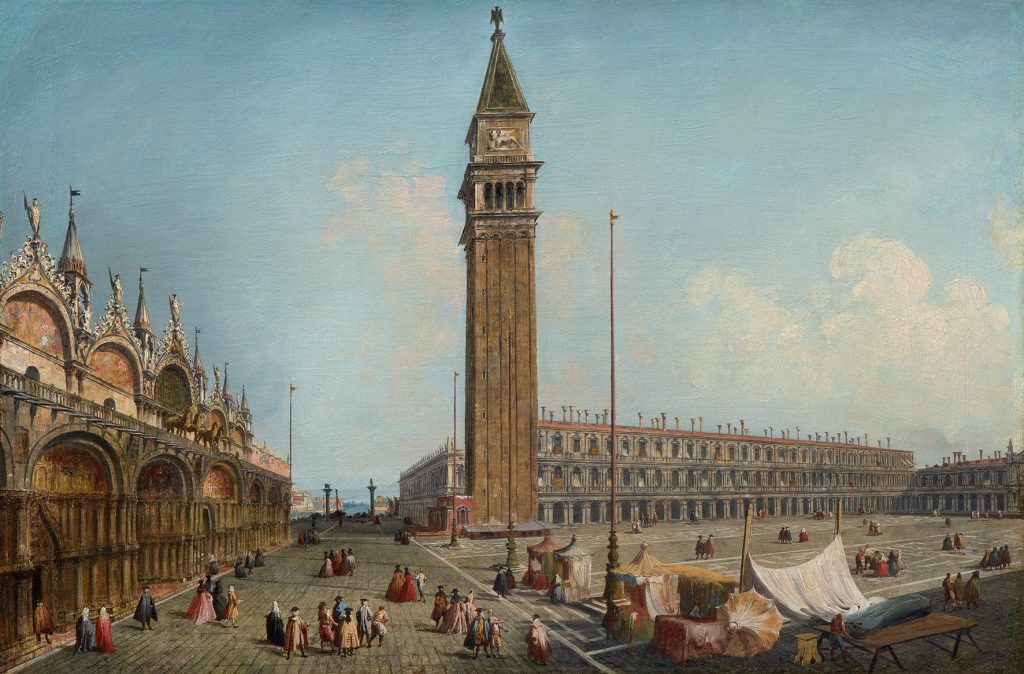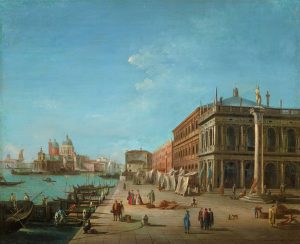
Gaspar van Wittel, called il Vanvitelli (1653–1736), The Colosseum and the Arch of Constantine, Rome, oil on canvas, 57.5 x 110 cm, estimate €250,000 – 300,000
View paintings, or vedute, were hugely popular amongst collectors in 18th century Italy and remain in high demand to this day. A selection of paintings of Venice and Rome are amongst the highlights of the Old Master Paintings sale this autumn.
The practice of painting accurate views, or vedute, flourished as an independent genre in Italy and became hugely popular in the 18th century and beyond. In contrast to earlier depictions of city scenes, in which the setting is merely a backdrop for paintings of religious or secular subjects, the view itself now became the sole protagonist.
Grand Tour
The rise in popularity of vedute was a consequence, at least in part, of the flourishing of the Grand Tour. Young aristocrats travelled to Italy, to complete their learning in art, architecture and music while visiting the splendours of antiquity in the cradle of western civilisation. The treasures of the great historical centres, in particular Rome and Venice, were regarded as works of reference – not simply to be enjoyed, but to be studied and emulated at home. Accurate topographical reproductions of monuments were much sought-after and vedute of the famous sites, such as the Roman Forum or the Grand Canal, were commissioned as keepsakes. The paintings served the visitors as souvenirs and as witness to the taste and education of their owners. Italian vedute were not only collected by foreign travellers but were also commissioned and collected by the Italian patriciate.

Gaspare Vanvitelli
One of the first important vedutisti to enjoy success with Roman patrons was the Dutch-born Gaspar van Wittel, known as Gaspare Vanvitelli. His preference for precise and realistic detail – revealing the artist’s northern apprenticeship – characterises his depictions of Rome. Vanvitelli replaced the regular subject of religious sites and antique ruins in his work, introducing for the first time, views reflecting the reality of 18th century Rome. His life-like depiction of the warm Italian sunlight added allure and romanticism to these scenes of daily life.
Vanvitelli achieved the accuracy he required by using the so-called camera obscura, which consisted of a portable wooden box that, through mirrors inside, reproduced the image of the landscape in front of it. This allowed the artist to sketch out a draft, review the projected image and then complete the work in his studio. This system, combined with a perfect mastery of perspective, made the depiction of views precise and realistic.
Michele Marieschi

oil on canvas, 55.8 x 83.7 cm, estimate €300,000 – 400,000
In contrast to Vanvitelli’s, and subsequently Canaletto’s, scientific approach, Michele Marieschi, who was one of the most fascinating artistic personalities in Venice, developed his own unique style. He operated independently and in parallel with the great vedutisti-workshops. His views are more theatrical in composition with wide-angled views, feathery and rapid brushwork, rich and atmospheric colours and shimmering light effects.

Giuseppe Bernardino Bison
The popularity of view paintings carried on right into the 19th century and beyond. Giuseppe Bernardino Bison was one of the last great exponents of the painting of vedute. Taking advantage of a new market in the houses of the well-to-do, he produced a wide variety of views to satisfy the increasingly sophisticated tastes of collectors.
AUCTION
OLD MASTER PAINTINGS
9 November 2022
Palais Dorotheum Vienna













